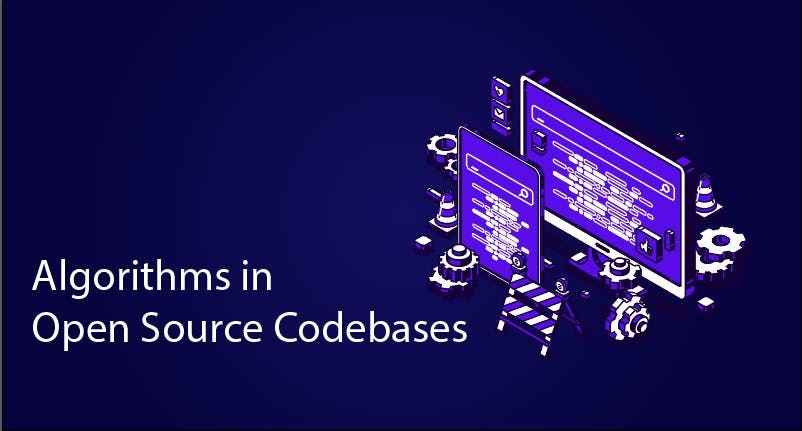Have you ever found yourself wondering why you’re learning algorithms like QuickSort, Dijkstra’s, or Binary Search, only to feel like they don’t connect with real-world software? It’s a common frustration. You might ask, Why do I need to know all this if companies seem to use other fancy tools anyway?
Here’s the truth: Real-world systems do use these algorithms, just not always in their textbook form.
They are adapted, optimized, and combined to meet practical needs. The theory isn’t wasted. It’s the foundation. You’re learning the raw tools that production systems turn into polished machines.
Why Study Real-World Open Source Code?
While algorithm textbooks teach fundamental principles, looking at real open source projects shows you how those principles become living, breathing software. Reading production code reveals the trade-offs and engineering decisions that textbooks often skip: how to handle edge cases, how to balance speed with memory, and how to optimize for real-world data that’s messy and unpredictable.
Let’s look at some concrete examples to see this in action. By exploring how different algorithms are implemented in real-world open-source projects, we can better appreciate not just the theory behind them, but also the practical choices developers make to adapt these algorithms to real-world constraints and requirements.
Sorting: From Bubble Sort to Chrome’s V8 Engine
In class, you probably studied sorting algorithms like:
- Bubble Sort
- Merge Sort
- QuickSort
These give you the foundation for understanding how data can be ordered efficiently. But what happens when this theory meets the complexity of a modern software system?
Real-World Sorting: More Than Just Big O
Real-world sorting isn’t just about Big O notation; it’s about adapting algorithms to real data, workloads, and hardware constraints. In production systems, you’ll usually find:
- Optimized hybrids like Timsort, Introsort, or custom QuickSort variants
- Algorithms that dynamically adapt based on input size, memory usage, or data patterns
- Considerations of stability (preserving the order of equal elements), memory overhead, and nearly-sorted inputs
To see this in practice, let’s take the example of Chrome’s V8 engine. V8 is the open source JavaScript engine developed by Google that runs inside Chrome and many other applications (including Node.js). It’s responsible for compiling and executing JavaScript code, which includes sorting arrays when your JavaScript code calls array.sort().
If we look at Chrome’s V8 JavaScript engine as an example, you can see exactly how these engineering choices come together in practice:
- Uses Insertion Sort for arrays with 10 items or fewer because it’s faster on small data due to low overhead
- Switches to a QuickSort variant for larger arrays - the very algorithm you learned in class
- Since Chrome 70, it switched to Timsort - a hybrid stable and adaptive sorting algorithm based on insertion and merge sorts
These choices are driven by the same Big O notation logic taught in class, but enhanced to minimise time and space in the typical workloads browsers face.
Inside Chrome’s V8 Engine
Here’s a simplified view of how V8 sorts arrays:
// Binary Insertion Sort: fast for small arrays
void BinaryInsertionSort(array, low, high) {
for (int start = low + 1; start < high; ++start) {
auto pivot = array[start];
int left = low;
int right = start;
// Binary search to find the insertion position for pivot
while (left < right) {
int mid = left + (right - left) / 2;
if (pivot < array[mid]) {
right = mid;
} else {
left = mid + 1;
}
}
// Shift elements to make space for pivot
for (int i = start; i > left; --i) {
array[i] = array[i - 1];
}
array[left] = pivot;
}
}Why binary search in insertion sort?
The binary search reduces the number of comparisons needed to find the right insertion spot compared to scanning linearly, improving performance on small arrays.
Here’s a simplified view of how V8 decides between Tim Sort and Insertion Sort:
// Main sort entry decides which algorithm to use
void ArraySort(array) {
int n = array.length;
if (n <= 10) {
BinaryInsertionSort(array, 0, n);
} else {
TimSort(array, n); // Hybrid merge + insertion sort
}
}If you’re curious, check out how Chrome’s V8 engine does it.
Searching: From Binary Search to Elasticsearch
In class, you probably studied about searching algorithms such as:
- Linear Search (O(n))
- Binary Search (O(log n))
These help you understand the basic trade-offs between scanning data and dividing it to search faster.
Searching in Real-World Systems
In real world systems, search is taken even further. Instead of just scanning arrays engineers build,
- Indexing structures like B-trees, inverted indices, and vector search
- Systems like Elasticsearch that blend multiple search strategies to deliver results quickly, even on massive datasets
Bridging Theory and Practice
Here’s how the gap between theory and practice is bridged:
- Binary Search only works on sorted data, so production systems pre-sort or index data at scale to enable it
- Elasticsearch builds inverted indices, giant dictionaries mapping every word to documents containing it — this allows lightning-fast lookups
- Query rewriting helps optimize complex queries to speed up execution and scoring
Elasticsearch Search Implementation (Lucene’s IndexSearcher)
If you want to see how this comes together in production code, check out Lucene’s IndexSearcher, the core search executor used by Elasticsearch to run queries against its inverted index.
Here’s a simplified look at Lucene’s core search method, used by Elasticsearch:
public TopDocs search(Query query, int n) throws IOException {
// Step 1: Rewrite query for optimization
Query rewrittenQuery = rewrite(query);
// Step 2: Create a Weight to prepare the query for scoring
Weight weight = createWeight(rewrittenQuery, ScoreMode.COMPLETE, 1.0f);
// Step 3: Create a collector to gather top n results
TopScoreDocCollector collector = TopScoreDocCollector.create(n, Integer.MAX_VALUE);
// Step 4: Execute search over all index segments (leaves)
search(leafContexts, weight, collector);
// Step 5: Return the top docs collected
return collector.topDocs();
}This method orchestrates:
- Query rewriting for efficiency
- Preparing query weighting (how results are scored)
- Iterating over segments of the index
- Collecting and returning top-scoring documents
If you want to see how this comes together in production code, check out
Pathfinding: From BFS to Google Maps
In class, you’ve likely studied pathfinding algorithms like:
- BFS (Breadth-First Search)
- DFS (Depth-First Search)
- Dijkstra’s algorithm
- A* (A-Star)
These algorithms introduce you to finding the shortest or most efficient path through a network of nodes.
Real-World Pathfinding
In the real world, systems build on these foundations. For example:
- A* is still widely used, including in GPS systems
- Modern route-planning combines A* with graph partitioning, heuristics, and traffic prediction to handle large-scale, real-time navigation
How Theory Connects to Practice
Google Maps builds on A* but adds:
- Real-time data, such as traffic and road closures
- User preferences (fastest vs shortest route)
- Complex cost models
Underneath, it’s still finding the shortest path based on cost estimation, exactly what you learned.
Inside a Production Routing Engine: GraphHopper
GraphHopper is an open-source routing engine powering real-world navigation. Here’s a simplified A* implementation inspired by GraphHopper’s core:
/**
* Simplified A algorithm implementation for routing on a graph.
* Shows the core idea of using a priority queue with estimated costs.
*/
public class SimpleAStar {
// Graph structure with nodes and edges
private final Graph graph;
// Priority queue to pick the next best node to explore
private final PriorityQueue<NodeEntry> openSet;
// Map to store the best cost found so far for each node
private final Map<Integer, Double> costSoFar;
// Map to store the path (parent nodes)
private final Map<Integer, Integer> cameFrom;
// Destination node to reach
private final int goal;
public SimpleAStar(Graph graph, int start, int goal) {
this.graph = graph;
this.goal = goal;
this.openSet = new PriorityQueue<>();
this.costSoFar = new HashMap<>();
this.cameFrom = new HashMap<>();
// Initialize starting point with cost=0 and estimated cost to goal
double startEstimate = heuristic(start, goal);
openSet.add(new NodeEntry(start, 0, startEstimate));
costSoFar.put(start, 0.0);
}
/**
* Main A algorithm loop.
* Explores nodes with lowest estimated total cost first.
*/
public List<Integer> findPath() {
while (!openSet.isEmpty()) {
NodeEntry current = openSet.poll();
// Stop if we reached the goal
if (current.node == goal) {
return reconstructPath(goal);
}
// Explore neighbors
for (Edge edge : graph.getEdges(current.node)) {
int neighbor = edge.getTarget();
double newCost = costSoFar.get(current.node) + edge.getWeight();
// If this path to neighbor is better, update
if (!costSoFar.containsKey(neighbor) || newCost < costSoFar.get(neighbor)) {
costSoFar.put(neighbor, newCost);
double priority = newCost + heuristic(neighbor, goal);
openSet.add(new NodeEntry(neighbor, newCost, priority));
cameFrom.put(neighbor, current.node);
}
}
}
// No path found
return Collections.emptyList();
}
/**
* Simple heuristic estimating distance from node to goal.
* In real applications, this could be Euclidean distance or similar.
*/
private double heuristic(int node, int goal) {
// Placeholder for heuristic function - replace with domain-specific heuristic
return 0;
}
/**
* Reconstruct path from goal to start by following parent links.
*/
private List<Integer> reconstructPath(int end) {
List<Integer> path = new ArrayList<>();
int current = end;
while (cameFrom.containsKey(current)) {
path.add(current);
current = cameFrom.get(current);
}
path.add(current); // add start node
Collections.reverse(path);
return path;
}
/**
* Helper class representing a node in the priority queue.
* Orders by the estimated total cost (costSoFar + heuristic).
*/
private static class NodeEntry implements Comparable<NodeEntry> {
int node;
double costSoFar;
double estimatedTotalCost;
public NodeEntry(int node, double costSoFar, double estimatedTotalCost) {
this.node = node;
this.costSoFar = costSoFar;
this.estimatedTotalCost = estimatedTotalCost;
}
@Override
public int compareTo(NodeEntry other) {
return Double.compare(this.estimatedTotalCost, other.estimatedTotalCost);
}
}
// Graph and Edge classes are placeholders for your graph data structure
public interface Graph {
List<Edge> getEdges(int node);
}
public interface Edge {
int getTarget();
double getWeight();
}
}If you want to explore pathfinding in action, here are a couple of great resources:
- GraphHopper Routing Engine: A production-ready routing engine that powers real-world navigation systems.
- PathFinding.js Web Visualizer: A lightweight JavaScript library for visualizing pathfinding algorithms right in the browser.
Why You Still Need the Theory
Think of algorithm theory like learning how engines work. Sure, you might never build an engine from scratch, but if your car breaks down, foundational knowledge can save you from being stranded. Similarly, even if you never write a sorting algorithm by hand again, understanding how it works gives you the power to debug, optimize, and architect better systems.
Real vs. Theory: Your Sorting Reality Check
Let’s bridge the gap between what you learn in class and what your browser or operating system actually uses.
Task: Compare Your Code to a Production Engine
Step 1: Write Your Own Sorting Algorithm (Theory)
Implement Bubble Sort (or any other sorting algorithm you’ve studied).
def bubble_sort(arr):
for i in range(len(arr)):
for j in range(len(arr)-i-1):
if arr[j] > arr[j+1]:
arr[j], arr[j+1] = arr[j+1], arr[j]
return arrStep 2: Use a Built-in Sort (Reality)
Now, sort the exact same data using your language’s built-in sorting function.
sorted(arr) # uses TimsortStep 3: Compare the Time Taken for Execution
Now compare the execution times for both step 1 and step 2. You’ll see that the built in sort is more efficient and reliable than the textbook implementation. This should help you understand that,
- Your textbook algorithm works but it’s slow, inflexible, and doesn’t scale.
- Real-world sort functions are engineered for millions of cases: nearly-sorted, reversed, repeated values, edge cases.
- Textbooks teach foundations. Real-world systems build smart hybrids, use caching, and are hardware-aware.

